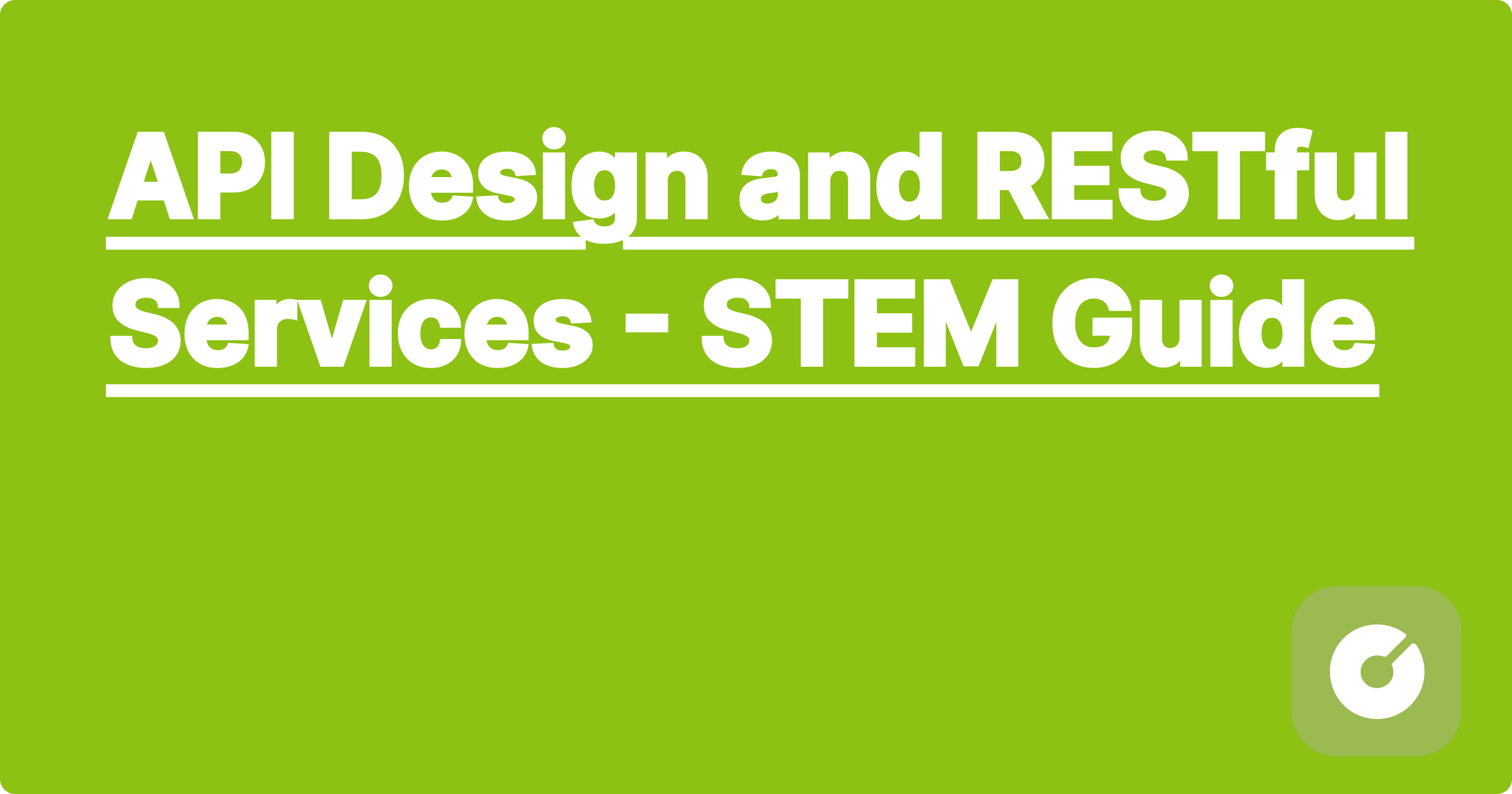## API Design and RESTful Services: Building the Backbone of Modern Applications
The modern technological landscape is built on interconnected systems. Imagine a world where your favorite streaming service couldn't fetch movie recommendations, or your social media feed remained stubbornly blank. This seamless integration, the silent conductor of our digital orchestra, is orchestrated by APIs – Application Programming Interfaces. This post dives deep into API design, focusing on the prevalent RESTful architecture, equipping STEM students with the knowledge to build robust and efficient applications.
**1. Core Concepts Explained:**
An API acts as a messenger, translating requests from one application to another. It defines how different software components communicate and exchange data. Think of it as a contract: it specifies the available functions, the input parameters they expect, and the format of the returned data. REST (Representational State Transfer), the dominant architectural style for APIs, leverages HTTP methods (GET, POST, PUT, DELETE) to manipulate resources.
* **Resources:** These represent the core entities within your application. For example, in an e-commerce system, resources could include "products," "customers," and "orders." Each resource is identified by a unique URI (Uniform Resource Identifier).
* **HTTP Methods:** REST utilizes standard HTTP verbs to perform specific actions on resources:
* **GET:** Retrieves a resource.
* **POST:** Creates a new resource.
* **PUT:** Updates an existing resource.
* **DELETE:** Deletes a resource.
* **Representations:** Resources are represented in a standardized format, commonly JSON (JavaScript Object Notation) or XML (Extensible Markup Language). JSON is preferred for its lightweight nature and ease of parsing.
* **Statelessness:** A crucial aspect of REST is its statelessness. Each request from a client to the server contains all the information needed to process it; the server doesn't maintain any session information between requests. This improves scalability and reliability.
* **Cacheability:** REST APIs should allow clients to cache responses, reducing server load and improving performance. HTTP headers like `Cache-Control` manage caching mechanisms.
* **Client-Server Architecture:** REST adheres to a clear client-server separation. Clients make requests, and the server responds, promoting loose coupling and independent evolution of the two components.
* **Uniform Interface:** REST aims for a consistent interface across all resources, simplifying interaction. This uniformity is achieved through the use of standard HTTP methods and consistent resource representations.
**2. Practical Examples:**
Let’s consider a simple blogging API. Resources would be "posts" and "comments." Here's how different HTTP methods might be used:
* **GET /posts:** Retrieves a list of all blog posts. The response might look like this (JSON):
```json
[
{"id": 1, "title": "API Design 101", "content": "Introduction to APIs..."},
{"id": 2, "title": "RESTful Services Explained", "content": "Understanding REST principles..."}
]
```
* **GET /posts/1:** Retrieves a specific blog post with ID 1.
* **POST /posts:** Creates a new blog post. The request body would contain the title and content of the new post.
* **PUT /posts/1:** Updates the blog post with ID 1. The request body would contain the updated title and content.
* **DELETE /posts/1:** Deletes the blog post with ID 1.
**3. Implementation Guide:**
Building a RESTful API involves several steps:
* **Design:** Carefully plan your resources, URIs, and HTTP methods. Prioritize clarity and consistency. Use nouns for resources and verbs for actions.
* **Data Modeling:** Choose an appropriate data model (e.g., relational database, NoSQL database) based on your application's needs.
* **Framework Selection:** Leverage a suitable framework. Popular choices include:
* **Python:** Flask, Django REST framework
* **Node.js:** Express.js
* **Java:** Spring Boot
* **Ruby:** Ruby on Rails
* **API Documentation:** Create comprehensive API documentation using tools like Swagger or OpenAPI. This is crucial for developers who will consume your API.
* **Testing:** Implement thorough testing, including unit tests and integration tests, to ensure the correctness and stability of your API.
* **Security:** Secure your API by employing appropriate authentication and authorization mechanisms (e.g., OAuth 2.0, JWT). Protect against common vulnerabilities like SQL injection and cross-site scripting (XSS).
**Example (Python with Flask):**
A simple Flask API endpoint to get a list of posts:
```python
from flask import Flask, jsonify
app = Flask(__name__)
posts = [
{"id": 1, "title": "API Design 101", "content": "Introduction to APIs..."},
{"id": 2, "title": "RESTful Services Explained", "content": "Understanding REST principles..."}
]
@app.route('/posts', methods=['GET'])
def get_posts():
return jsonify(posts)
if __name__ == '__main__':
app.run(debug=True)
```
This code snippet defines a simple endpoint `/posts` that returns a JSON representation of the `posts` list when a GET request is made.
**4. Tools and Resources:**
Several tools and resources are invaluable for API development:
* **Postman:** A popular API testing tool.
* **Swagger/OpenAPI:** For API design and documentation.
* **Insomnia:** Another robust API client for testing and debugging.
* **REST APIs tutorial sites:** Countless online tutorials and courses cover REST API development in various programming languages.
**5. Conclusion and Next Steps:**
Mastering API design and RESTful services is crucial for any aspiring software engineer. This post provided a foundation for understanding these core concepts. To further your knowledge, delve deeper into specific frameworks, explore advanced topics like API security and caching, and build your own RESTful APIs to gain practical experience. Experiment with different frameworks and technologies to find what best suits your needs and project requirements. Start with a small project and gradually increase complexity, always prioritizing clean code, robust testing, and clear documentation. The journey to building robust and scalable applications begins with understanding and mastering the art of API design.
Related Articles
Explore these related topics to enhance your understanding:
